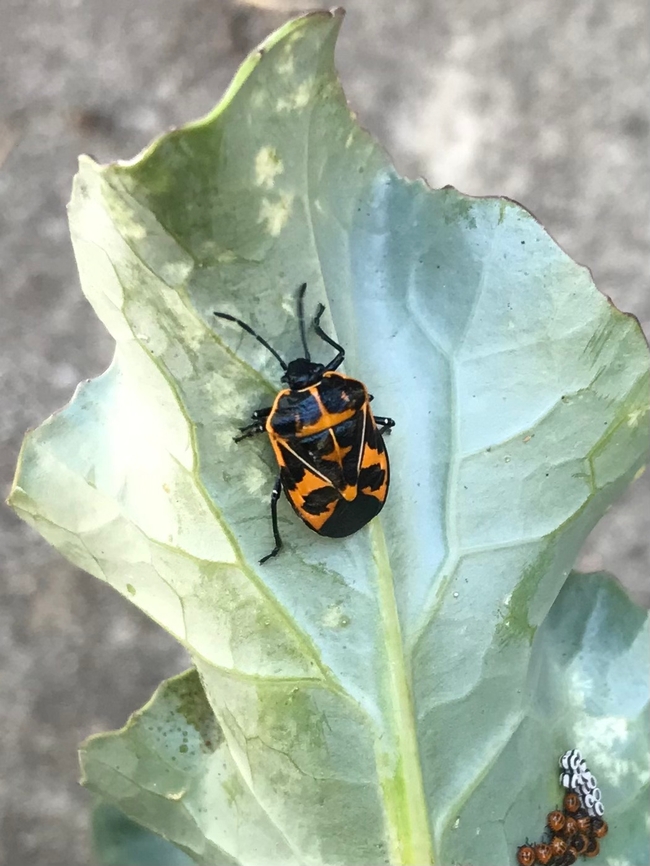Harlequin Bugs
I have enjoyed growing broccoli in my garden for many years. I just have a few plants in one of my raised beds. When I hadn't pulled the plants up and replaced them with warm season crops in some mild winter years, I found that the plants would sometimes over-winter. This year I started fresh with a six-pack of transplants. They did go into the soil at their usual spot, however, as I don't really have room to do crop rotation in my small space.
I enjoyed the crop through spring but in May I noticed that the plants didn't look healthy. I thought it was just too hot for them as they are cool-season plants. But the leaves looked blotchy and stippled and I saw a few orangey-red and black bugs. Suspecting these were the culprits, I tried to grab one but they would immediately drop down to the ground and into my mulch. About this time, we left town for a week or so.
When we got home and I remembered about the broccoli, the infestation had worsened. It looked like the bugs were clustering together. On the undersides of the leaves, I found eggs and nymphs. I took some photos on my phone and headed to the Integrated Pest Management portion of the University of California Agriculture and Natural Resources website: ipm.ucanr.edu. Looking under garden pests, vegetables, and broccoli, I scanned the list and located the culprit, Harlequin bug, Murgantia histronica.
The Harlequin bug loves plants like cabbage, cauliflower, broccoli, and mustards. The eggs are quite striking with black and white horizontal stripes. The eggs hatch and produce nymphs, then there are 4-5 molts on the way to becoming adults. The striking orangey-red and black coloration is a warning to predators that they don't taste good. The insects pierce plant tissue and suck out the liquid leaving blotchy areas on the leaves. This is called stippling.
Treatments mentioned included hand picking the bugs and eggs for small or early infestations. One site mentioned using floating row covers for prevention. For severe or end-of-season infestations, several sites suggested destroying all crop residue to prevent an over-wintering population of adults. I was not interested in using insecticides, as my family is eating out of this garden. I also have many pollinators that visit my garden and I don't want to use anything that might harm them.
As my broccoli was closely placed amidst other plants, I cut them to the soil level and disposed of them in a bag and into the general trash. I think from here on out I will routinely pull out my broccoli plants as soon as production slows and start fresh every year. I will also monitor them earlier and jump on any infestation right away. I will also relook at my limited garden space and see if I can find a different place to rotate my broccoli into. Perhaps I could try a grow bag next year.
For anyone who would like more information on Harlequin Bugs, I can suggest the Extension Guide H-259 from the College of Agriculture. Consumer, and Environmental Sciences at New Mexico State University. This extensive review can be found at https://pubs.nmsu.edu.

Harlequin eggs and nymphs.



Posted by Catherine M Wise on August 17, 2022 at 10:52 AM